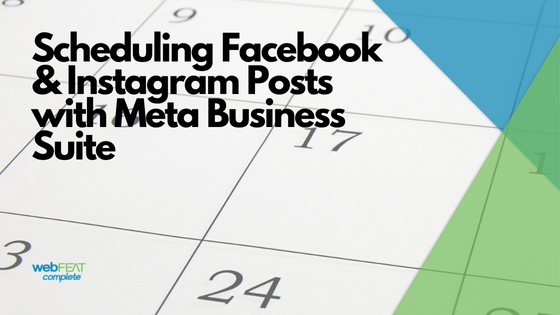There are so many myths floating around in the digital marketing world about the effectiveness of email marketing, as well as what email marketing best practices are. We decided to take a look at some of these myths and explain how they do and do not pertain to the overall success of your email marketing campaigns and your email marketing ROI.
Myth 1: Sending too many emails will annoy my customers and increase the likelihood that my emails will be marked as spam.
While it is true that there is a correlation between email frequency and unsubscribe rates, this does not mean that your results will be negatively impacted by sending too many emails. In fact, studies that show an increase in email frequency can actually lead to an increase in email ROI. Check out this study done by Alchemy Worx, detailing how they helped their client increase quote requests by 48% and ROI by 45%.
The most IMPORTANT factor to consider when sending email campaigns is whether or not that campaign is adding value to your email list. If you’re sending emails with the intention of giving something valuable to your customers, such as information, tips, and tricks, or discount codes, they aren’t going to be annoyed by your frequency.
There is also the misconception that too many emails can send your sender address right to spam jail. Once again, as long as your emails add value and the people on your list are opening and engaging with your emails, you’re not going to be sent to spam. Many mail server’s spam filters now factor in engagement rates. If the servers see your subscribers are opening your emails to them, the emails aren’t going to be marked as spam.
Myth 2: You should be worried about people unsubscribing from your lists.
In reality, unsubscribes aren’t necessarily a cause for concern. When people unsubscribe it has two good effects: it helps to clean your database of emails, and it also helps you analyze your emails for relevancy.
Having a cleaner database can help your bottom line of CTR and conversions.
Let’s say you’re a local restaurant, and you send an email about your weekly specials out to your subscribers each week. One of those subscribers has since moved to a different state and can no longer enjoy your weekly specials, and opening the emails makes them sad because they miss dining with you. They hit the unsubscribe button to no longer receive the weekly specials emails. That subscriber ultimately did you a favor. Since they don’t live in the area anymore, they won’t be engaging with the offers that you send out via email and therefore driving down your CTR and conversion rate.
When people unsubscribe from your emails, that gives you a clue as to the relevancy of that particular email to that person, or group of people. If you’re sending email campaigns about your sale on running shoes to a particular list, and you notice you have a high unsubscribe rate from that list, you know that something needs to be changed. Either you need to go in and update the contacts on that list, or retarget your emails in a more appealing way to your subscribers.
Yes, you want your emails to reach as many people as you possibly can. But what you want more than that is for the people your emails reach to engage with the emails they receive.
Myth 3: The goal of your email should be to get as many people to open it as possible.
Yes, to achieve your ultimate goal with email marketing, people probably need to open your email to do so. However, that shouldn’t be the main goal of the emails you send out.
The ultimate end goal of each email campaign you send should be some kind of conversion. You want people to take some kind of action from your email, whether it be filling out your contact form, signing up for a webinar, or purchasing an item from your website using the sales code you sent out.
You want to be able to see some sort of tangible result from the email you send out, and that should be your goal every time you plan and execute an email campaign. This is why it is extremely important to sit down and plan out all of your email campaigns, and to decide ahead of time what you want your end goal to be.
Myth 4: Certain words, like FREE and BUY NOW, and punctuation like exclamation points trigger spam filters.
Spam filters are meant to pick up on, well, spam. But most have evolved past automatically sending any email with “free” in the subject line straight to spam jail. There are more factors to consider, such as engaging content.
If you put “Free Drink With The Purchase of a Sandwich” in your email subject line, and in the email is a coupon code and link to order online to get your free drink, and people open the email and claim the offer- your message won’t be triggering spam filters.
A good practice is to base the catchy subject words you use off of records of past engagement. If people open and engage with emails that have “Free” in the subject line, and those emails are actually offering something for free, your email isn’t going to be sent to spam.
Myth 5: Mobile-responsiveness doesn’t matter in email campaigns.
Before I dive into why this myth is not true- take a second to think about it. Where do you read the majority of your emails? Was your answer “on my phone”? Because that was my answer. And if you open an email on your phone and the formatting is all wonky, do you attempt to discern what it’s saying, or do you delete it? Was your answer “I delete it”? Because that was my answer.
In July of 2020, Super Office reported that almost 62% of all emails are now opened and read on mobile devices. If your email isn’t formatted in a way that the majority of your subscribers will be able to easily read it and get a good experience, then the majority of your subscribers probably won’t read your emails.
A good tip to make sure your emails are optimized for mobile is to send test emails and open them on mobile devices. This way you can double-check that your images fit, your links work, and you’re not sending your subscribers a big block of hard to read text.
Myth 6: Good emails have tons of images because the world is more visually-focused.
The use of images is definitely essential in the world of digital marketing. However, images are not essential to email marketing specifically. While images do help your emails to be more on brand, many issues arise when an email is the majority, or even entirely image-based.
Many mail clients and email users block images from being seen. This causes the images to show up as blank squares, or red X’s when people open the email and don’t get the intended point across.
Too many images can also cause accessibility issues for the people reading them. If you have a subscriber who requires the use of a screen reader to decipher the email’s content, and the email is image-based, that person won’t be able to understand the content and intent of the email.
It’s okay to have an image or two, as long as they are backed by alternate text just in case the images aren’t allowed by the email clients or there are accessibility concerns, however, the majority of your email should be in text format.
Myth 7: Subject lines are the main factor that influences open rates.
While subjects are important to engage with some users, 69% of subscribers [cmbinfo.com] say the main factor in determining whether or not to open an email is the sender’s name. Email marketing is such a great way to establish personal connections with your subscribers, which means that it is important to have a sender name that they can connect with. The sender name marketing@company.com isn’t going to do much to establish that connection with the reader and will have an impact on whether or not they open the email. Pinpointe marketing reports that you can increase your chances of an email being opened by 35% if you have a personalized sender name.
Myth 8: Email marketing is a dying channel.
Yeah, that’s just not true. For starters: In 2019, there were reported to be 3.9 BILLION email users, and that number is growing every year. On top of that, email marketing also has the highest ROI at a rate of 3800%- that’s $38 returned to every $1 spent on email marketing efforts.
If the high return on investment isn’t enough to convince you that email marketing is a viable method to increase sales, it is also the preferred method of communication for the majority of consumers. Research shows that the majority of consumers prefer email, and in fact, in 2017 Statista reported that 49% of consumers want to receive brand emails. Email marketing is not dying in any way at all and it is absolutely worth your investment
In all, your key takeaway should be this: If your company isn’t investing in email marketing, you should be. The ROI it yields and the ability it gives you to establish connections with your client base is second to none. Our team of certified digital marketing experts would love to talk with you more about how email marketing can help your company achieve success online. If you’re interested in expanding your email marketing efforts, give us a shout! Fill out our contact form and we will get back to you with all the exciting details.
“”





